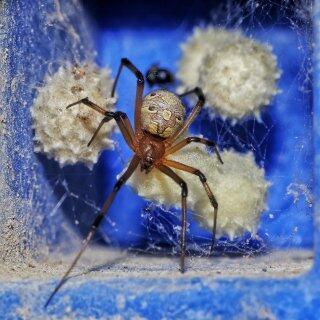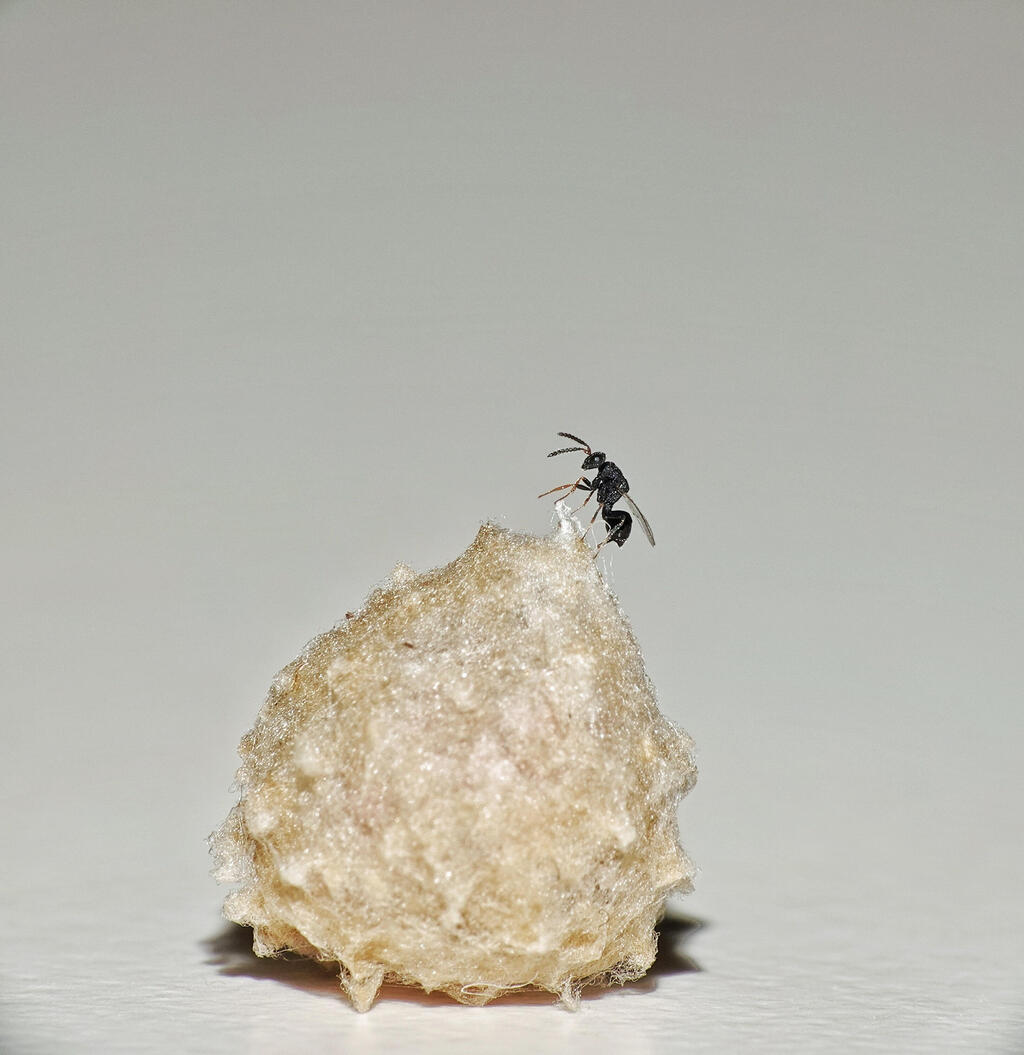A new study reveals how the brown widow spider which was discovered in Tel Aviv in the 1980s and later invaded the southern Negev Desert breeds there at an alarming rate and endangers the ecological system.
In an attempt to rein in the spread of the arachnid, a group of researchers from the Ben Gurion University of the Negev are trying to crack the secret to the success of the invasive species far away from its natural habitat.
Humans continue to move countless species to new environments, both intentionally and unintentionally, which can cause ecological and economic damage. However, there is still much to learn about the traits that allow these species to thrive and spread to new habitats.
The brown widow spider (or by its scientific name latrodectus geometricus), is a venomous invasive species that uses its venom to kill its prey and defend itself.
The brown widow most likely originated in South Africa, and since the 1930s, the spider has spread to many other regions the world over, including Israel, mainly thanks to humans.
The spider's bite is very painful, but usually not dangerous to humans. In addition, the spider is not aggressive and usually avoids biting humans.
In another new study in Animal Behaviour, Dr. Monica Mowery, a Zuckerman STEM postdoctoral fellow in Prof. Michal Segoli's lab at Ben-Gurion University, in a collaboration between Prof. Yael Lubin at Ben-Gurion University, Dr. Ally Harari at the Volcani Center, and Maydianne Andrade and Andrew Mason at the University of Toronto Scarborough, tested how traits of invasive spiders shift on a broad geographic scale on two continents.
They compared eight populations of invasive brown widows, four in the United States, and four in Israel, for which the first detection dates are known. To test which traits shifted during the invasion process, they collected spiders from these populations, and measured their tendency to disperse, as well as traits that may affect survival and establishment, such as spider body size, and traits related to reproduction and fecundity in the lab.
"We found that spiders from newly established populations in Israel dispersed at a higher rate and were quicker to disperse than spiders from older established populations.
This was not the case in the U.S. populations. Spiders in more recently established populations in Israel were larger than those in older populations, but there were no consistent patterns across U.S. populations. We also found that spiders from recently established populations varied more in egg sac traits, which may be beneficial in a new, unpredictable environment.
Overall, we found patterns of traits shifting with invasion establishment time in Israel, but not the United States. The lack of differences in the U.S. might be explained by the large geographic distances, long time scale of invasion, and likely occurrence of multiple invasions," explains Mowery.
Interactions with native competitors and predators may affect invasion success. After colonization, invasive species spread to new locations, where they may have an advantage over native species. One possible advantage is avoidance of parasites or better defenses against them. In a new study in Behavioral Ecology, Mowery, Valeria Arabesky, Prof. Yael Lubin, and Prof. Michal Segoli tested this idea by comparing the defenses of the invasive brown widow and a native white widow spider.
They found that a common natural enemy, a parasitoid wasp, prefers native white widow spider egg sacs compared to those of the invasive brown widow spider. More and larger wasps emerged from the native widow egg sacs, indicating that the species is a better host for the wasp. The lower suitability of brown widow egg sacs for the wasp parasitoid may explain the rapid invasive spread of brown widow spiders worldwide.
"Once we know which combinations of traits lead to invasion success, we will be able to better predict potential invasive species and manage species that are already spreading," concludes Mowery.



